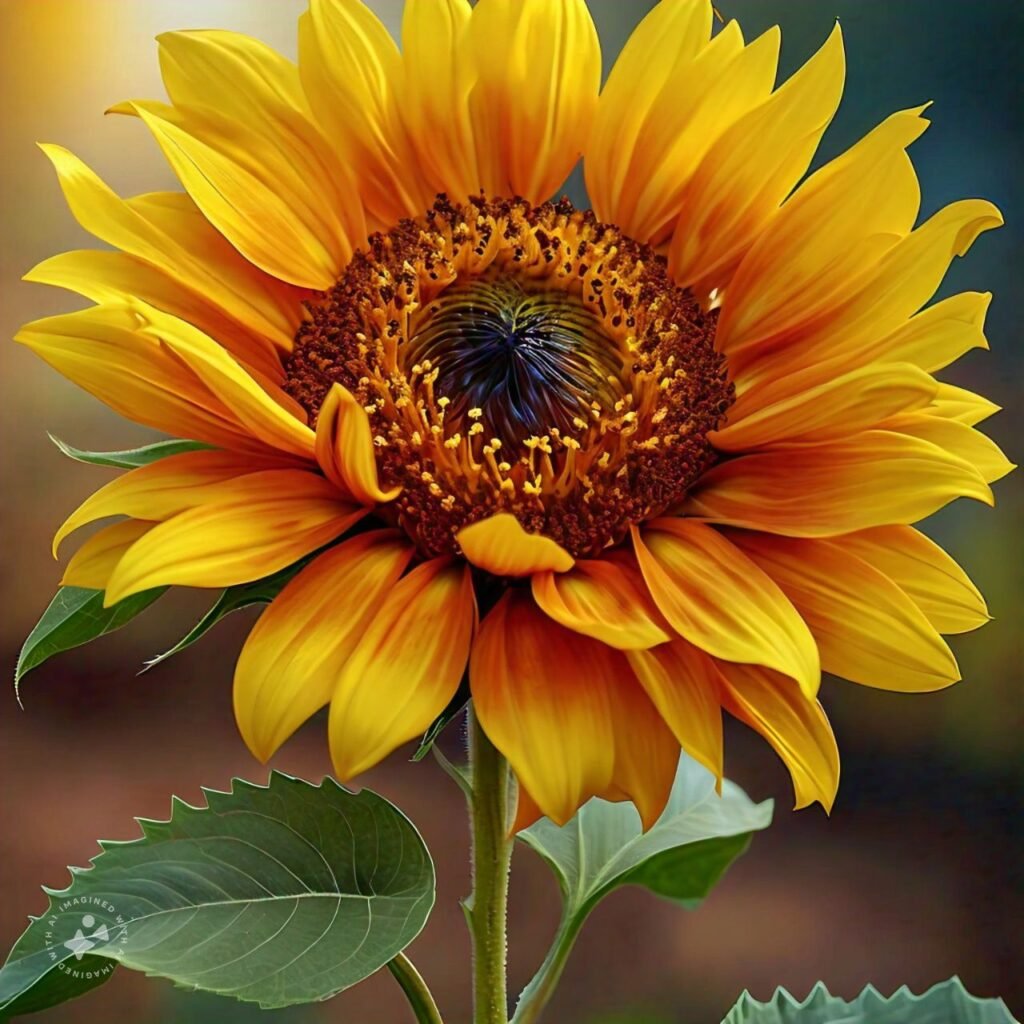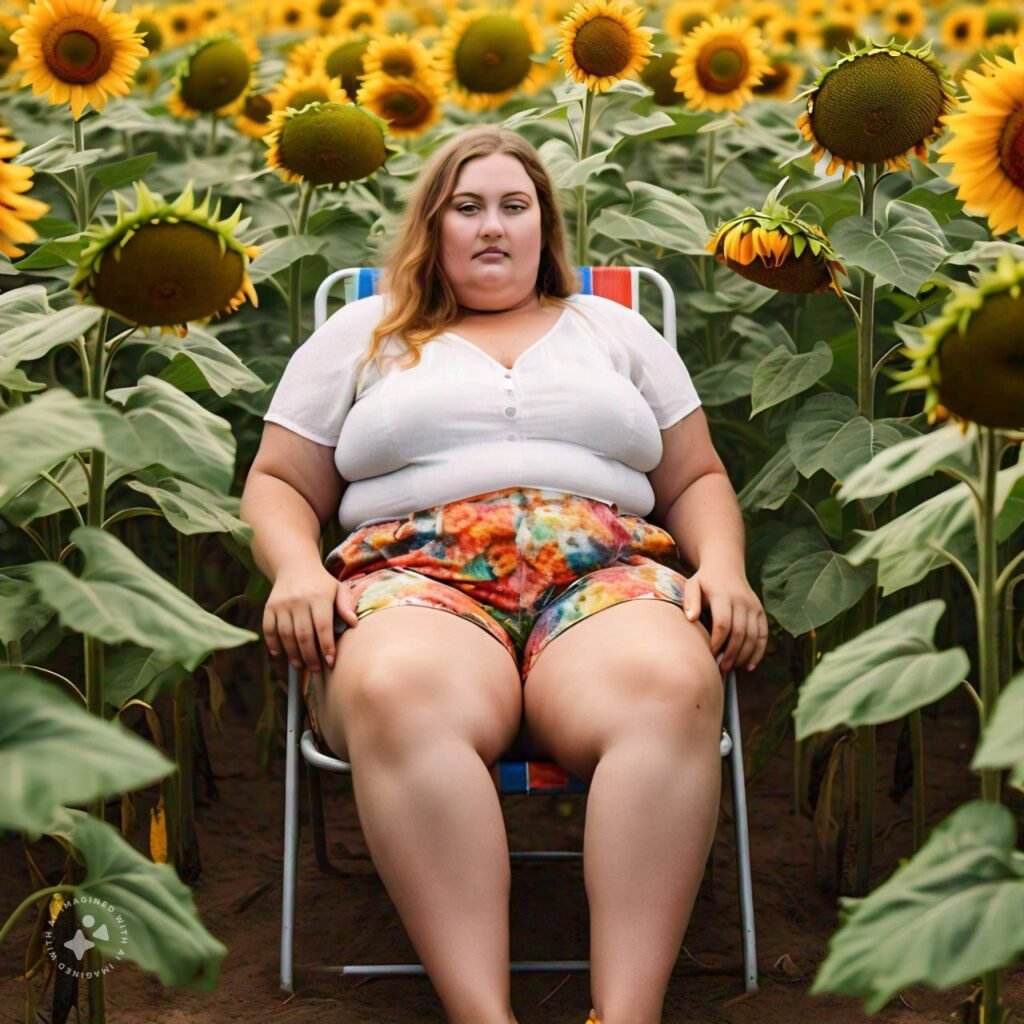Sunflower (Helianthus): A Golden Marvel of Nature

The Radiant Sunflower
The sunflower, with its bright yellow petals and towering height, is not just a stunning visual spectacle but also a plant rich in history, symbolism, and utility. This golden flower, often associated with positivity and warmth, has captivated humans for centuries with its vibrant beauty and myriad uses. From ancient civilizations to modern gardens, the sunflower holds a special place in the hearts of many.
Origins and History of the Sunflower
The sunflower, scientifically known as Helianthus annuus, traces its roots back to North America, where it was first cultivated by indigenous tribes over 4,500 years ago. Native Americans valued the sunflower not only for its aesthetic appeal but also for its practical uses. The seeds were a staple food, and the plant was used in everything from dyes to medicines.
As European explorers discovered the New World, they brought sunflowers back to Europe, where the plant quickly gained popularity. By the 18th century, sunflowers were widely grown across Europe, especially in Russia, which became the world’s largest producer of sunflower oil. The sunflower’s journey from a North American staple to a global agricultural crop is a testament to its adaptability and usefulness.
Botanical Characteristics of the Sunflower
Standing tall with its sturdy stem and large, vibrant flower head, the sunflower is a botanical marvel that draws attention in any landscape. The sunflower can grow to impressive heights, sometimes reaching over 10 feet tall, with a thick, fibrous stem that supports its large, round flower head.
The flower head, known as a capitulum, is composed of numerous tiny flowers, or florets, which eventually develop into seeds. One of the most fascinating aspects of the sunflower is its heliotropic behavior. During its early growth stages, the sunflower’s head follows the sun’s movement across the sky, a phenomenon known as heliotropism. This sun-tracking ability optimizes photosynthesis, allowing the plant to grow more efficiently.

Sunflowers come in various sizes and forms, ranging from the towering giant sunflowers to smaller, ornamental varieties suitable for garden borders. The diversity in sunflower types means there’s a sunflower for every garden, whether you’re looking for a statement piece or a compact, decorative plant.

Sunflower Symbolism and Cultural Significance
Across different cultures and eras, the sunflower has come to symbolize a range of positive attributes, from loyalty and longevity to happiness and energy. In many cultures, the sunflower is a symbol of the sun itself, embodying warmth, positivity, and vitality.
Artists and writers have long been inspired by sunflowers. Vincent van Gogh’s series of sunflower paintings are among the most famous works of art, symbolizing gratitude and friendship. In literature, sunflowers often represent adoration and loyalty, their steady, sun-facing growth reflecting steadfast devotion.
The sunflower’s symbolism extends beyond art and literature. In many cultures, it is a symbol of spiritual faith and devotion. The sunflower is also associated with environmental consciousness, often seen as a symbol of sustainability due to its role in supporting pollinators and its use in phytoremediation (the process of using plants to clean polluted environments).
The Sunflower’s Role in Agriculture
Beyond its beauty, the sunflower plays a significant role in agriculture, contributing to food production, soil health, and even renewable energy. Sunflower seeds are a popular snack worldwide, valued for their nutritional content, including healthy fats, protein, and vitamins. Sunflower oil, extracted from the seeds, is a widely used cooking oil, known for its light flavor and high smoke point.
In agriculture, sunflowers are often used in crop rotation to improve soil health. Their deep roots help to aerate the soil, reducing compaction and improving water infiltration. Sunflowers are also used as a cover crop, helping to suppress weeds and protect the soil from erosion.

The growing interest in renewable energy has also brought attention to sunflowers as a potential biofuel source. Sunflower oil can be converted into biodiesel, providing a renewable and environmentally friendly alternative to fossil fuels.

Growing Sunflowers: Tips for Gardeners
Whether you’re a seasoned gardener or a beginner, growing sunflowers is a rewarding experience that brings a splash of color and life to any garden. Sunflowers are relatively easy to grow, making them a popular choice for gardeners of all skill levels.
For the best results, plant sunflowers in well-drained soil in a location that receives full sunlight. Sunflowers thrive in warm weather and require plenty of sunlight to grow to their full potential. Water the plants regularly, especially during dry periods, but be careful not to overwater, as sunflowers prefer slightly dry conditions.
Common pests like aphids and birds can be managed with natural repellents or physical barriers. Sunflowers are generally hardy plants, but they can be susceptible to diseases like mildew, which can be prevented by ensuring good air circulation around the plants.
When it’s time to harvest, sunflower seeds can be collected for eating, replanting, or bird feed. The flower heads can also be dried and used in arrangements or crafts, adding a rustic touch to home décor.
Sunflowers in Art and Media
The sunflower has inspired countless artists, filmmakers, and designers, making it one of the most iconic and recognizable flowers in popular culture. Vincent van Gogh’s sunflower series is perhaps the most famous artistic representation of this flower, capturing its radiant beauty in bold, expressive strokes.

In film and advertising, sunflowers are often used to symbolize happiness, vitality, and a connection to nature. Their bright color and distinctive shape make them an attractive motif for branding and product design, especially in industries related to health, wellness, and sustainability.

Sunflowers also inspire DIY projects and home décor. From sunflower-themed crafts to wall art, their cheerful presence can brighten any space. The flower’s versatility makes it a popular choice for wedding decorations, summer parties, and even fashion accessories.
Environmental and Ecological Benefits of Sunflowers
Sunflowers are not just beautiful to look at; they also play a vital role in supporting local ecosystems and promoting environmental sustainability. As a pollinator-friendly plant, sunflowers attract bees, butterflies, and other beneficial insects, supporting biodiversity in gardens and wild spaces.
In addition to supporting pollinators, sunflowers are used in phytoremediation, a process that involves using plants to remove toxins from the soil. Sunflowers are particularly effective at absorbing heavy metals like lead and arsenic, making them valuable allies in the fight against soil contamination.
By planting sunflowers, gardeners can contribute to environmental sustainability, whether by providing a food source for pollinators, improving soil health, or helping to clean polluted environments. The sunflower’s ability to thrive in diverse conditions and support ecological balance underscores its role as more than just a pretty face in the garden.
The Everlasting Appeal of Sunflowers
With its striking appearance, rich history, and diverse uses, the sunflower continues to capture the hearts and minds of people around the world. From ancient North American civilizations to modern-day gardens, the sunflower’s enduring charm lies in its combination of beauty, utility, and symbolic power.

Whether admired for its bright, sunny demeanor or valued for its agricultural and environmental contributions, the sunflower remains a golden marvel of nature. As we continue to explore and appreciate the many facets of this remarkable plant, the sunflower’s legacy as a symbol of warmth, positivity, and resilience will undoubtedly endure.
- How much sunlight do sunflowers need?
Sunflowers need full sun, requiring at least 6-8 hours of direct sunlight daily. They thrive in bright, warm locations, which help them grow tall and produce large, vibrant flowers. Insufficient sunlight can result in stunted growth and smaller blooms.
- What type of soil is best for sunflowers?
Sunflowers prefer well-drained, nutrient-rich soil with a pH of 6.0 to 7.5. Loamy soil with good organic content is ideal, but they can adapt to various soil types as long as it’s not waterlogged. Adding compost can enhance soil fertility. - How often should I water sunflowers?
Water sunflowers deeply but infrequently, about once a week. The soil should be moist but not soggy. During dry spells or in hot weather, increase watering to ensure the soil doesn’t dry out completely, especially during the early growth stages.
- Do sunflowers need fertilizer?
Sunflowers benefit from a balanced fertilizer, particularly during early growth. A fertilizer with equal parts nitrogen, phosphorus, and potassium (like 10-10-10) is recommended. Avoid over-fertilizing, as too much nitrogen can result in more leaves but fewer flowers. - How do I protect sunflowers from pests?
Sunflowers can be affected by pests like aphids, caterpillars, and birds. Use insecticidal soap for small insect infestations. For birds, netting or scare devices can help. Regularly inspect plants for pests and remove any visible bugs by hand if necessary.
- What is the best time to plant sunflower seeds?
Plant sunflower seeds in late spring, after the last frost when the soil temperature is at least 50°F (10°C). In most areas, this means planting in late April to early June. This ensures optimal growing conditions for the seeds to germinate. - How deep should sunflower seeds be planted?
Plant sunflower seeds about 1 to 1.5 inches deep in the soil. Space them 6 inches apart if planting multiple seeds. Cover lightly with soil and water thoroughly. This depth allows for proper root development and helps protect the seeds from birds. - How long do sunflowers take to grow?
Sunflowers typically take 70 to 100 days from planting to bloom, depending on the variety. The growth cycle includes seed germination, vegetative growth, flowering, and seed development. Fast-growing varieties may bloom in as little as 60 days.
- Can sunflowers grow in pots?
Yes, sunflowers can grow in pots, especially dwarf varieties. Use a large container with good drainage and fill it with well-draining potting soil. Ensure the pot receives plenty of sunlight, and water regularly to keep the soil moist but not waterlogged. - How do I prevent sunflowers from falling over?
To prevent sunflowers from toppling, plant them in sheltered locations away from strong winds. Use stakes or garden twine to support tall varieties. Ensure they receive enough sunlight, which helps them develop strong, sturdy stems. - Can sunflowers be grown indoors?
Sunflowers can be grown indoors if provided with adequate light. Use a sunny window or supplement with grow lights. Choose dwarf varieties for indoor growth. Ensure the soil remains moist, and rotate the plant regularly to ensure even light distribution.
- How do I deadhead sunflowers?
Deadhead sunflowers by cutting off spent blooms with sharp scissors or pruners. This encourages the plant to produce more flowers. Cut just above a set of healthy leaves or where new buds are forming. Deadheading is most effective for branching varieties. - How can I harvest sunflower seeds?
Harvest sunflower seeds when the flower heads begin to droop and the back of the head turns yellow or brown. Cut the head off the plant, leaving about 6 inches of stem, and hang it upside down in a dry, well-ventilated area to fully dry before removing the seeds.
- What are common diseases affecting sunflowers?
Sunflowers can be affected by diseases like downy mildew, rust, and powdery mildew. These fungal infections often thrive in humid conditions. Prevent them by ensuring good air circulation, avoiding overhead watering, and using fungicides if necessary. - How do I attract pollinators to my sunflower garden?
Plant sunflowers in groups and avoid using pesticides that can harm pollinators. Choose varieties with open, accessible flowers that provide easy access to nectar and pollen. Companion planting with herbs and flowers that attract bees and butterflies can also help.
What temperature is ideal for growing sunflowers?
Sunflowers thrive in temperatures between 70°F and 78°F (21°C to 26°C). They can tolerate heat well but may struggle with cold, especially frost. Protect young plants from late frosts by covering them or delaying planting until the risk has passed.
- Can I grow sunflowers from cuttings?
While sunflowers are typically grown from seeds, some varieties can be propagated from cuttings. Take a cutting from a healthy plant, dip it in rooting hormone, and plant it in well-draining soil. Keep it moist and in a warm, sunny location until roots develop. - How do I store harvested sunflower seeds?
After harvesting, dry the seeds thoroughly in a warm, dry place. Once dry, store them in an airtight container in a cool, dark place. Properly stored seeds can last for several months, retaining their freshness and viability for planting next season. - What companion plants grow well with sunflowers?
Sunflowers grow well with plants like beans, corn, squash, and cucumbers. These companions benefit from the shade provided by sunflowers and can deter pests. Avoid planting sunflowers with potatoes, as they can compete for nutrients and attract the same pests.
- How can I encourage sunflowers to bloom longer?
To extend blooming, regularly deadhead spent flowers and ensure consistent watering. Fertilizing with a balanced fertilizer during the growing season also helps. Planting sunflowers in succession, with new seeds every few weeks, ensures continuous blooms throughout the season. - Do sunflowers self-seed?
Yes, sunflowers can self-seed if left to their own devices. As the flower heads dry and seeds drop, they may sprout the following season. To control self-seeding, harvest seeds before they fall or remove flower heads after blooming. - How can I control weeds around sunflowers?
Control weeds by mulching around sunflower plants with organic materials like straw or wood chips. Mulch helps suppress weeds and retain soil moisture. Regularly check for weeds and remove them by hand to prevent them from competing with your sunflowers for nutrients.
- How do I prepare the soil for planting sunflowers?
Prepare the soil by loosening it to a depth of about 2 feet, as sunflowers have deep roots. Add compost or well-rotted manure to improve fertility. Ensure the soil is well-drained, as sunflowers dislike soggy conditions. Test soil pH and adjust if necessary. - How do I thin sunflower seedlings?
Thin sunflower seedlings when they are 3-4 inches tall, leaving the strongest seedlings spaced about 12-18 inches apart, depending on the variety. Gently pull or cut the weaker seedlings to avoid disturbing the roots of the remaining plants. - Can sunflowers grow in sandy soil?
Sunflowers can grow in sandy soil as long as it is well-drained and has some organic matter to retain moisture. Amend sandy soil with compost or other organic materials to improve its nutrient content and water-holding capacity, ensuring healthier sunflower growth.
- What are the best sunflower varieties for cutting gardens?
Varieties like ‘ProCut,’ ‘Sunrich,’ and ‘Moulin Rouge’ are excellent for cutting gardens. These sunflowers produce large, pollenless blooms with long, strong stems, making them ideal for floral arrangements. They also have a longer vase life compared to other varieties. - How can I prevent birds from eating sunflower seeds?
To prevent birds from eating sunflower seeds, cover the flower heads with mesh bags or fine netting once the seeds start to develop. You can also hang reflective objects or use scare tactics like decoys to deter birds from feasting on your sunflowers. - How long do sunflower plants live?
Sunflower plants are annuals, meaning they complete their life cycle in one growing season. After blooming and setting seeds, the plant will begin to decline and eventually die. The entire cycle, from planting to death, usually lasts around 3-4 months.
- Can sunflowers grow in shade?
Sunflowers require full sun to thrive and do not grow well in shade. While they may tolerate partial shade, insufficient sunlight will result in leggy plants with fewer and smaller flowers. For the best growth and blooming, plant sunflowers in a location with full sun. - How do I transplant sunflower seedlings?
Transplant sunflower seedlings when they are about 3-4 inches tall and have a few sets of true leaves. Gently dig around the roots, keeping the root ball intact, and plant them in their final location, ensuring they have enough space and sunlight to grow properly.
